John Hurrell – 10 June, 2016
In this exhibition of thirteen (mainly Middle Eastern) artists, radical politics of the present day is compared to that of the late sixties and early seventies, with the notion of a ‘beach-head' being an attacking ‘progressive' avant-garde advancing through a defended beach of reactionary conservatism. There are about twenty works, with some being mini-shows and others installations for film or video.
Auckland
Morehshin Allahyari, Marwa Arsanios, Khaled Barakeh, Don Driver, Harun Farocki & Andrei Ujica, Matthew Galloway, Bouchra Khalili, Sener Ozram, Savas Boyraz, Khaled Sabsabi and Hito Steyerl
Beachhead’s PIECE OF MIND
Curated by Misal Adnan Yildiz
5 May - 25 June 2016
In this exhibition of thirteen (mainly Middle Eastern) artists, radical politics of the present day is compared to that of the late sixties and early seventies, with the notion of a ‘beach-head’ being an attacking ‘progressive’ avant-garde advancing through a defended beach of reactionary conservatism. There are about twenty works, with some being mini-shows and others installations for film or video.
Five contributions I found particularly engrossing were by the late Harun Farocki, Matt Galloway, Şener Özmen, Marwa Arsanios, and Khaled Sabsabi.
German filmmaker Farocki I remember as creating the highlight of an Artspace exhibition in 2010 when Robyn Pickens curated her intern exhibition. In Comparison was an hour long documentary about brick production in India, showing all the different stages in the manufacture by hand. And different variations in the process throughout India.
Now in this, Adnan Yildiz’s current curated show, Farocki’s Their Newspapers is a 17 min. b/w ‘agit-prop’ film (1968) set in Berlin with a very obvious Godardian influence and a young cast playing a small group of radical intellectuals who openly despise the tabloid press and the authority of the state. Made during the time of the Vietnam War, when the Baader Meinhof gang was setting off bombs in cities like Frankfurt, the film (set in dingy flats and grey undistinguished streets) has a surprising humour and lightness of touch. It oscillates between seriousness and levity, via the mechanistic Marxist language about ‘apparatus’ that the characters speak, and their flippant actions, passing secret paper messages around through kissing mouths, speeding car windows or thrown darts.
Matthew Galloway‘s art project involves being a designer and an investigative journalist, having a salient presence in this show through his use of six appropriated corporate logos that he has tellingly reinserted into maps and diagrams displayed on Artspace walls, Artspace windows, unfurled banners, posters and 24 page give-away newsprint publication.
His The Ground Swallows You was first presented at Blue Oyster, and looks at the sea journey of the phosphate-loaded Josco Shuzou from Western Sahara to Dunedin. Western Sahara was annexed by Morocco in 1975 so there are obvious issues about the ownership of the phosphate sold to New Zealand farmers. His publication, loaded up with elegant reconfigured graphics, contains two fascinating interviews. One is with Jacob Mundy, Assistant Professor of Peace and Conflict Studies at Colgate University (NY) about the history of Morocco involvement in Western Sahara, and the growth of Sahrawi nationalism and resistance. The other is with Ian Urbina, the author of a series of fascinating New York Times articles called The Outlaw Ocean about the international waterways and the law. The discussion has similarities with the rivetting Alan Sekula and Noel Burch film essay, The Forgotten Space, shown in Artspace during the last Auckland Triennial, and available in the AAG Research Library.
Popular symbols and comicbook heroes come under close scrutiny in the work of Kurdish artist Şener Özmen. In the narrow corridor leading from the street to the Artspace stairwell he presents a suite of a dozen sequential posters, showing himself in a Superman costume, transmuted now to ‘Supermuslim‘. He takes off his red cape and lays it on the floor facing east, using it as a prayer mat, thus cleverly using humour to counteract Muslimphobia.
Özmen’s other contribution is a video featuring him contemplating a fluttering white dove. He questions the efficacy of this beautiful bird as a symbol for global peace:
You mean nothing to me as a symbol. You don’t even fulfil your mission assigned by us idiots….Still, you don’t take up sectarian violence.
His young son narrates Özmen’s voiceover, in awkward Turkish, as Kurdish is his mother tongue - a poignant layering to the cynical commentary.
Australian Lebanese artist Khaled Sabsabi presents a two screen video featuring whirling dervishes, the mystical Sufi side of Islam that perform the trancelike rotating dance in flowing white skirts. One screen is gridded up (9 x 11) with short looped backgrounds behind each dancer, showing fractured images of catastrophe and manmade tragedy. The big screen opposite presents one dancer only, but with a much longer background loop of fragmented calamities.
Sabsabi’s work is related to the seventies images of Martha Rosler where her photographs of middleclass living rooms and kitchens had images of the Vietnam War appearing in the large windows. With Sabsabi however, there is no intended critique where religion is shown to be turning its back on the world, but it does seem that way. He seems here to be mocking Sufism’s withdrawal from the world, though other ‘Sufi’ works contradict this.
The issue of engagement with the world is focussed on in the video work of Beirut-based Marwa Arsanios, who looks at the marketing of an anti-colonial heroine, and her own contradictory ambivalences. In it the actress Jessika Khazrek plays Jamila Bouhired, the icon Algerian freedom fighter who in the story is about to plant a bomb in a crowded bar. The actress shows us a portrait of Bouhired on an late fifties Egyptian government sponsored magazine cover, holding a pistol. We also see her portrayed by another actress in Gillo Pontecorvo’s 1966 film The Battle of Algiers, again as she prepares to plant a bomb.
Early on in Arsanios’ film, the Khazrek ‘Bouhired’ goes on a commando training camp where during a jittery night patrol she is frightened by a bear in the undergrowth. The panic draws out her (and Arsanios’s) complex hostilities, loves and fears; various feminist, anti-colonialist, nationalist, sexual and conflictual self-esteem issues, all mixed up together.
There is a lot of other material to investigate here in this show, from Hito Steyerl to Don Driver. Some contributions are lacklustre and trite, others are engrossing. A mixed bag. I’ve dwelt on the highlights.
John Hurrell
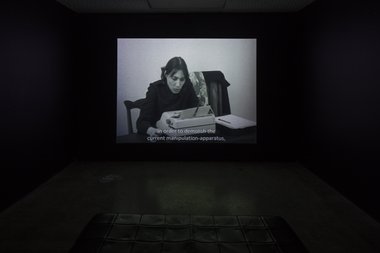
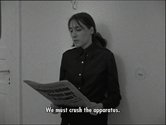
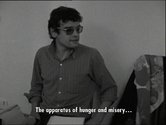
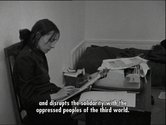
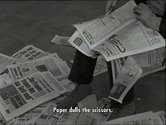



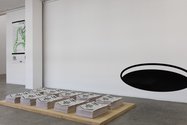
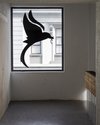
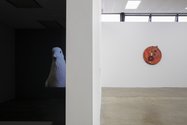
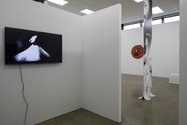
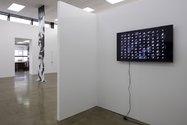
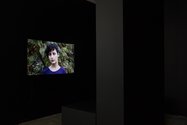
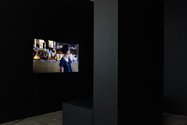
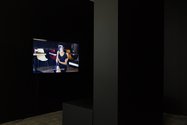
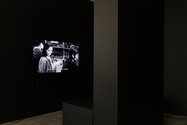
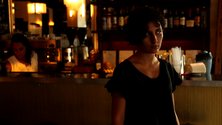
 Two Rooms presents a program of residencies and projects
Two Rooms presents a program of residencies and projects Advertising in this column
Advertising in this column



This Discussion has 0 comments.
Comment
Participate
Register to Participate.
Sign in
Sign in to an existing account.